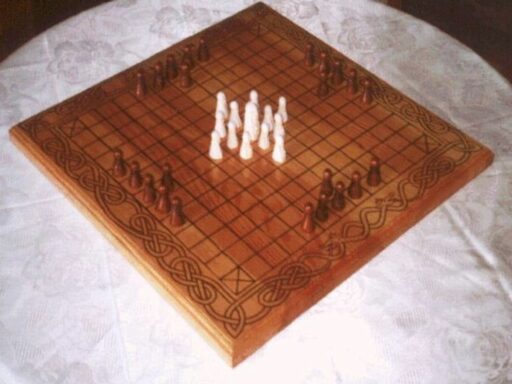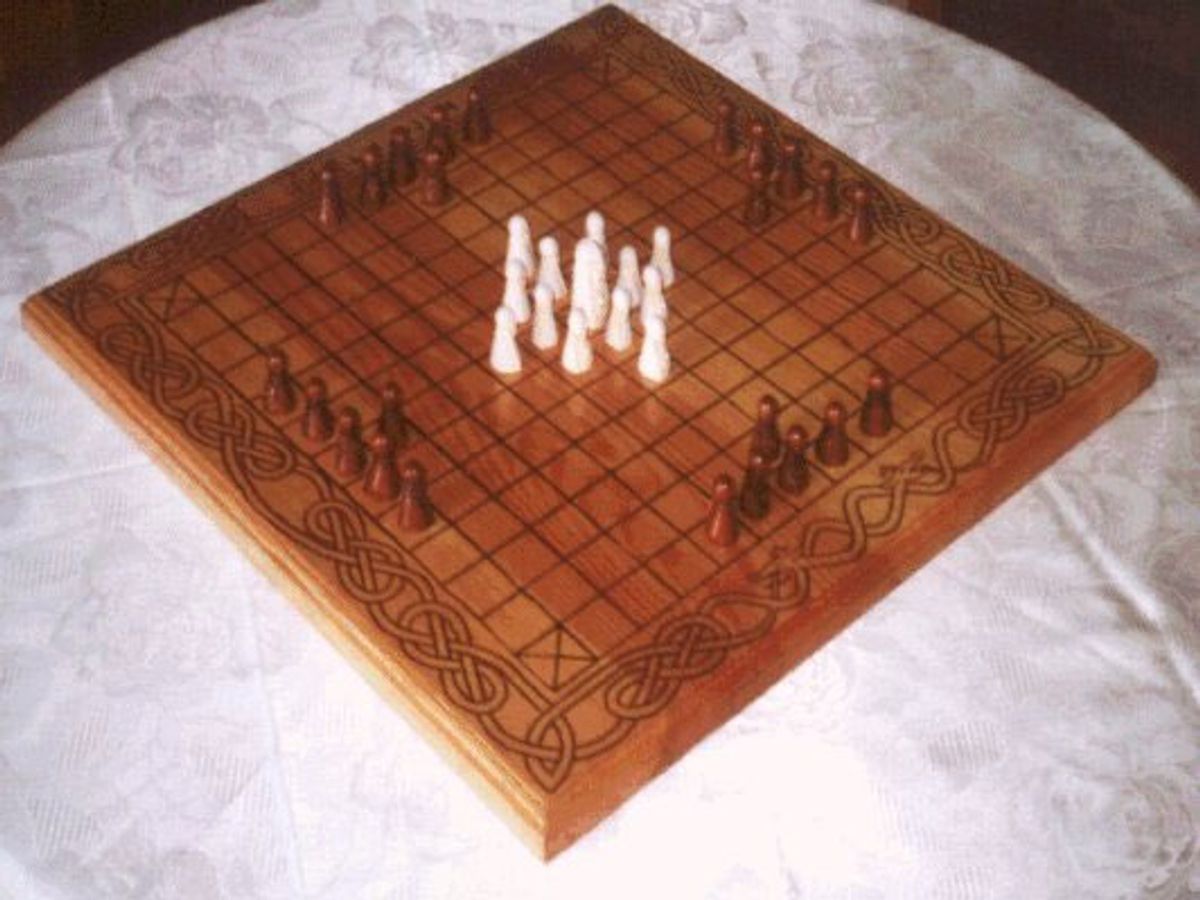Scythe, designed by Jamey Stegmaier and brought to life by Jakub Rozalski’s art, is a complex board game where strategy, planning, and anticipation play crucial roles. Set in an alternate-history 1920s, the game combines engine-building with asymmetric player abilities and a blend of farming and conflict. Mastering Scythe requires understanding its core mechanics, developing effective strategies, employing advanced tactics, and engaging in psychological warfare. This article delves into the nuances of Scythe, offering players insights on how to dominate the fields and emerge victorious.
Key Takeaways
- Comprehend Scythe’s unique engine-building gameplay and leverage asymmetric player powers to gain an advantage.
- Balance resource management and military might, using encounter and combat cards to influence the game’s outcome.
- Develop a deep understanding of faction strengths and weaknesses, and strategically plan turns to achieve objectives.
- Explore advanced tactics, including the strategic use of expansions, mechs, and player mats to enhance gameplay.
- Employ psychological tactics like intimidation, bluffing, and reading opponents to win beyond the physical board.
Understanding Scythe’s Core Mechanics

The Engine-Building Aspect
At the heart of Scythe’s gameplay is the engine-building mechanic, where players continuously improve their capabilities and efficiency. This is achieved through upgrading actions, constructing buildings, enlisting recruits, deploying mechs, and expanding territory. Each decision not only contributes to a player’s growth but also intricately affects their interactions with other players and the game board.
The strategic depth of Scythe is evident in the multitude of ways to enhance one’s engine. Here’s a brief overview of the engine-building elements:
- Upgrades: Make actions more efficient
- Buildings: Provide bonuses and improve map control
- Recruits: Enhance character abilities
- Mechs: Offer protection and mobility
- Expansion: Increases resource acquisition
The synergy between different engine components is crucial. A well-oiled engine can propel a player to victory, but it requires foresight and adaptability. The game’s end often comes down to who has built the most effective engine, reflecting the importance of strategic planning and execution.
Scythe’s replayability is bolstered by the various combinations of faction and player mats, which, along with the dynamic encounters and objectives, ensure that no two games are the same. The game’s unique feel is preserved even when playing the same faction repeatedly, as the order of engine improvements remains a pivotal decision.
Asymmetric Player Powers
Scythe’s asymmetric player powers are a cornerstone of its strategic depth. Each faction offers a unique set of abilities, resources, and starting positions, ensuring no two games are the same. This asymmetry not only adds variety but also requires players to adapt their strategies to their faction’s strengths and the dynamic game environment.
- The Nordic Kingdoms excel in mobility, with their workers able to swim across rivers from the start.
- The Rusviet Union can take the same action on consecutive turns, a powerful ability that can accelerate their game.
- The Crimean Khanate can use combat cards as resources, providing a flexible approach to resource management.
- The Saxony Empire can score multiple objectives, pushing players to a more aggressive playstyle.
- The Polania Republic has more options with encounter cards, allowing for a more adaptable strategy.
The key to mastering asymmetric powers lies in recognizing the opportunities and limitations they present. A deep understanding of your faction’s capabilities and how they interact with the game’s mechanics is essential for crafting a winning strategy.
Balancing Farming and Warfare
In Scythe, players must strike a delicate balance between the peaceful cultivation of farmland and the aggressive tactics of warfare. The efficiency of your economy is as crucial as the strength of your military. Players who focus too much on farming may find themselves unprepared for conflicts, while those who prioritize warfare risk neglecting their resource production, which is vital for maintaining an army and constructing buildings.
- Prioritize resource-rich territories for farming to fuel your war efforts.
- Use mechs to defend key farming areas without spreading your forces too thin.
- Balance your actions to avoid being predictable; mix farming and combat moves.
It’s essential to remember that while combat may not seem like the main focus, the ability to earn two combat stars can significantly accelerate your path to victory. This aspect should not be underestimated, as it can have massive implications on the game’s outcome.
The Role of Encounter and Combat Cards
Encounter and Combat Cards in Scythe add a layer of unpredictability and strategic depth to the game. Encounter cards, numbered 43-74, can be shuffled into the core game’s encounters or used as a separate deck, offering players unique advantages and choices that can sway the course of the game. Combat cards, on the other hand, are a tool for bluffing and power projection. A player may always add a combat card to mislead opponents about their true combat strength.
The true art of using these cards lies in the timing and the psychological impact on your opponents. Knowing when to play a powerful encounter card or bluff with a combat card can turn the tide of war or bolster your position without actual conflict.
Combat resolution is straightforward, with dice rolls and the number of meeples determining the outcome. However, the addition of combat cards introduces a tactical element where players must consider not just the visible forces but also the potential hidden strength behind their opponent’s power dial. Here’s a quick reference for using these cards effectively:
- Analyze your current board position and resources before drawing an encounter card.
- Consider the potential benefits of each encounter card and how it fits into your strategy.
- Use combat cards to bluff and create uncertainty in your opponents’ minds.
- Remember that combat cards can be a decoy; you don’t always have to play what you add behind your power dial.
Mastering the use of these cards is essential for any player looking to dominate the fields of Scythe.
Developing Effective Strategies

Analyzing Faction Strengths and Weaknesses
In Scythe, each faction presents a unique set of capabilities and challenges, making the understanding of these differences crucial for formulating a winning strategy. Every faction starts with distinct resources, abilities, and a hidden goal, which are designed to complement their specific playstyle and strategic advantages. For instance, some factions may excel in mobility and expansion, while others might have an edge in resource generation or combat.
- Crimea and Rusviet are often regarded by experienced players as having superior faction abilities.
- Starting positions are carefully balanced to enhance each faction’s asymmetrical nature.
- Understanding the interplay between faction abilities and available actions is key to dominating the board.
Mastery of your faction’s strengths and the ability to exploit the weaknesses of others can often dictate the flow of the game. It’s not just about building alliances or engaging in combat; it’s about making informed decisions that align with your faction’s narrative and strategic objectives. The Scythe board tells a story; modular hexes do not. This is a specific world we’ve built that’s based on an alternate reality, and each faction’s narrative is intertwined with their strategic potential.
Order of Operations: Planning Your Turns
In Scythe, the sequence in which you execute your actions can be as crucial as the actions themselves. Planning your turns in advance is key to maximizing efficiency and gaining an edge over your opponents. Consider the following steps to optimize your turn order:
- Evaluate the board state: Before you act, assess the current situation. Look for opportunities to expand, gather resources, or disrupt your opponents’ plans.
- Prioritize actions: Determine which actions will contribute most to your strategy this turn. Is it more important to move, produce, or trade right now?
- Sequence your actions: Some actions naturally lead into others. For example, producing resources before you build ensures you have the necessary materials.
- Anticipate opponents’ moves: Try to predict what your rivals will do and plan your actions to mitigate their impact on your strategy.
By carefully considering each move and its consequences, you can create a powerful chain of actions that propels you towards victory.
Remember, flexibility is important. While it’s beneficial to have a plan, be ready to adapt as the game unfolds. The ability to pivot your strategy in response to the dynamic board state is often what separates the winners from the rest.
The Importance of Objectives and Encounters
In Scythe, the pursuit of objectives and the strategic use of encounters can significantly influence the outcome of the game. Objectives provide a clear direction for your strategy, offering substantial rewards that can propel you towards victory. Encounters, on the other hand, present opportunities for unexpected advantages, often at critical junctures of the game.
- Objectives: Completing objectives grants you stars, which contribute to your overall score. Prioritize objectives that align with your faction’s strengths and your current position on the board.
- Encounters: These can yield resources, popularity, or even combat cards. Use encounters to supplement your strategy and gain an edge over your opponents.
Remember, while objectives and encounters are important, they should not derail your primary strategy. Adaptability is key, as rigidly pursuing a single path can leave you vulnerable to your opponents’ counter-moves.
Balancing the pursuit of objectives with other game elements is crucial. Scythe gives players almost complete control over their fate, and while there is an element of luck, strategic choices often determine the winner. Assess the risk and reward of each objective and encounter, and choose the path that best supports your overall game plan.
Adapting to Opponents’ Moves
In the dynamic landscape of Scythe, Adaptive Gameplay is crucial for maintaining an edge over your competitors. Skilled players often adapt their playstyle based on their opponent’s behavior, leading to a constant back-and-forth as each player attempts to outmaneuver the other. This dance of strategy requires a keen eye on the evolving board state and a flexible approach to your own tactics.
The key to successful adaptation is to anticipate and counteract your opponents’ strategies while remaining unpredictable yourself. It’s a delicate balance between reactive and proactive gameplay.
Understanding the intentions and potential moves of your opponents allows you to make informed decisions. For example, if an opponent is aggressively expanding, consider fortifying your borders or preparing for a counter-attack. Conversely, if they are focusing on resource accumulation, it might be an opportunity to expand your own territory. Here’s a simple list to keep in mind when adapting:
- Monitor opponents’ resource piles and unit positions.
- Adjust your strategy based on the state of the game board.
- Remain flexible with your objectives, as rigid plans can lead to downfall.
- Use diplomacy to your advantage, engaging in negotiations or forming temporary alliances.
Advanced Tactics for Experienced Players

Utilizing Expansions to Enhance Gameplay
Expansions in Scythe offer a refreshing twist to the game’s dynamics, introducing new elements that can significantly alter strategies. The Rise of Fenris, for instance, is not just an expansion but a transformative experience for Scythe enthusiasts. It introduces an 8-game replayable campaign and 11 interchangeable modules, catering to a wide range of playstyles and group sizes, from solo adventurers to a full party of 7.
The addition of exploration and treasure hunting through relic fragments and relics brings a new dimension to the game, encouraging players to venture beyond their comfort zones. This eXploration component, often missing from the base game, adds depth and complexity, allowing players to enhance production or influence on the board.
The strategic depth provided by expansions like The Rise of Fenris cannot be overstated. They offer a plethora of new strategies and tactics, making each game a unique challenge.
For those looking to elevate their Scythe experience, expansions are a must-try. They not only add variety but also provide opportunities to refine strategies and outmaneuver opponents in novel ways.
Mastering the Art of Combat and Threat
In Scythe, the threat of combat often carries more weight than the battles themselves. Players must navigate the tension between showing strength and avoiding unnecessary skirmishes. A well-timed threat can deter opponents from key territories or resources, without the need to engage directly.
- Assess your opponents’ positions and military capabilities.
- Consider the potential costs and benefits of initiating combat.
- Use the presence of your mechs and character to exert influence.
- Remember that sometimes, the best move is to hold back and maintain a strategic posture.
The art of threat in Scythe is a delicate balance. It’s about projecting power to protect interests while being ready to adapt to what the game and the players throw your way.
Understanding when to convert the threat into actual combat is crucial. It’s not just about having a strong military presence, but also about knowing when to use it to shape the flow of the game and when to keep your forces in reserve.
Strategic Use of Mechs and Characters
In the intricate world of Scythe, mechs and characters are not just showpieces but pivotal elements of your strategy. Understanding how to leverage these units can significantly tilt the balance of power in your favor. Mechs, with their unique abilities, can be used to control key territories and intimidate opponents. Characters, on the other hand, are essential for completing encounters and objectives that can provide critical advantages.
- Mech Abilities: Each faction’s mechs come with distinct abilities that can be combined with character skills for a formidable presence on the board. It’s crucial to know when to deploy these abilities to maximize their impact.
- Character Encounters: Characters can gain resources, make alliances, or even sabotage opponents through encounters. Prioritizing these can be a game-changer.
- Synergy: The synergy between mechs and characters is where the magic happens. Positioning them strategically can create powerful combos and unlock new pathways to victory.
Remember, the strategic deployment of mechs and characters is as much about the positions you take as the ones you threaten to take. The mere presence of a well-placed mech can deter opponents from key areas, while a character on the brink of completing an objective can force opponents to reconsider their plans.
While mechs and characters are formidable on their own, their true strength comes from how they complement each other and the rest of your strategy. Always consider the broader implications of their movements and how they can contribute to your overall game plan.
In-Depth Analysis of Player Mats
The player mats in Scythe are a critical component of the game’s strategy, each offering a unique starting position and progression path. Understanding the nuances of your player mat is essential to optimizing your gameplay. The mats are balanced with respect to starting resources, influenced by player order and playtest data, ensuring that each mat’s initial offerings are fair despite their numerical order.
The strategic implications of player mats extend beyond mere resource allocation. They dictate the tempo of your game, the efficiency of your actions, and can even influence your interactions with other players.
Here’s a quick reference for considering player mats:
- Assess the starting resources and their impact on your early game.
- Evaluate the action combinations available on your mat.
- Plan your upgrade paths to streamline your engine.
- Consider how your mat’s strengths can counter opponents’ strategies.
While the starting resources and mat order have a minor impact on the game, players should not underestimate the subtle advantages that can be leveraged from a deep understanding of their player mat.
Winning Beyond the Board: Psychological Warfare

The Intimidation Factor
In the intricate dance of Scythe, where every move is a delicate balance between growth and aggression, the intimidation factor plays a pivotal role. It’s not just about the strength of your forces or the efficiency of your engine; it’s about the psychological edge you hold over your opponents. A well-timed display of power or a strategic positioning of your mechs can send a clear message: tread carefully, or face the consequences.
- Presence: Establishing a dominant presence on the board can deter opponents from contesting valuable territories.
- Uncertainty: Utilizing hidden information and encounter cards can keep rivals guessing and hesitant.
- Projection: Conveying confidence in your actions can make opponents second-guess their strategies.
The subtle art of intimidation in Scythe is not about overt threats, but rather the sizzling unease that keeps opponents on edge. Can they trust you, or are you waiting for the perfect moment to strike?
Remember, in Scythe, a rival’s presence may be the only way to achieve further expansion. By mastering the art of intimidation, you not only secure your territories but also pave the way for future conquests without the need for direct conflict.
Bluffing and Misdirection
In the intricate dance of Scythe, bluffing and misdirection are tools as sharp as any mech’s blade. By projecting false intentions, you can manipulate opponents into overcommitting or holding back at crucial moments. This tactic is not just about the cards you play, but the confidence with which you play them.
- Always consider your opponent’s perspective and what you want them to believe.
- Use your actions to suggest a strategy that differs from your actual plan.
- Remember that even ‘bad’ cards have a role in shaping the game’s dynamics.
Bluffing is not solely reliant on the cards in your hand; it’s a strategic layer that involves reading the game and your opponents. It’s about making every move count, even when it seems inconsequential.
While some may argue that luck plays a dominant role, seasoned players know that careful risk assessment and understanding the flow of the game are what truly drive victory. Bluffing is a form of deception that involves making your opponent believe you have a stronger hand than you actually do. It requires confidence and a keen sense of timing.
Reading Your Opponents
In the intricate dance of Scythe, predicting your opponent’s next move can be as crucial as executing your own strategy. By closely observing their actions, you can anticipate their future plays and adjust your tactics accordingly. Analyze your opponent’s past moves and see if you can identify any patterns or trends. This information can help you stay one step ahead.
- Pay attention to resource accumulation and deployment of units.
- Notice which territories they seem to prioritize and how they expand.
- Keep track of their combat card usage to gauge their potential in battles.
Understanding your opponents’ goals and tendencies allows you to effectively counteract their strategies and protect your interests on the board.
Remember, each player’s approach to victory can differ significantly. Some may focus on a military strategy, while others might aim for economic dominance. By reading into their actions, you can discern their likely path to victory and disrupt it, while simultaneously advancing your own position.
The Impact of Hidden Objectives
The impact of hidden objectives in Scythe cannot be overstated. They add a layer of mystery and strategic depth that can turn the tide of the game. Players must constantly adapt their strategies, not only to the visible actions of their opponents but also to the potential unseen goals they may be pursuing. This uncertainty can lead to more cautious play, or bold moves to secure a lead before the objectives are revealed.
- Hidden objectives can influence player decisions on resource allocation and area control.
- They encourage players to observe and predict opponents’ behavior.
- The tension of unrevealed objectives adds excitement to the gameplay.
The true skill lies in balancing the pursuit of one’s own hidden objectives while preventing others from achieving theirs. This dual focus can create a thrilling endgame scenario where the winner is often the one who best managed the unknown.
Understanding the nuances of hidden objectives and how they interact with the game’s theme can frame the situation and enhance the understanding of Scythe’s objectives and mechanics. The element of surprise they bring to the table often results in a game that is both enjoyable and angst-ridden, as players weigh the benefits of revealing their plans against the potential bonuses of keeping them secret.
Conclusion
Mastering Scythe is a journey of strategic depth and tactical finesse, set against the rich tapestry of an alternate-history 1920s. As we’ve explored, success in this engine-building marvel requires a blend of foresight, adaptability, and a keen understanding of both your own faction and the dynamics at play on the board. Remember, the true essence of Scythe lies not just in the might of your mechs but in the cunning of your plans and the threats you pose. Whether you’re a seasoned veteran or a newcomer to the fields of battle, keep honing your strategies, engage with the community for deeper insights, and perhaps most importantly, enjoy the beautiful complexity that Jamey Stegmaier and Jakub Rozalski have crafted. May your Scythe experience be as rewarding as it is challenging, and may your name be etched in the annals of this game’s storied history.
Frequently Asked Questions
What is the main objective in Scythe?
The main objective in Scythe is to earn the most coins by the end of the game through various means such as controlling territory, achieving objectives, winning combats, and building your economic engine.
How does the engine-building aspect work in Scythe?
Engine-building in Scythe involves upgrading your player mat to reduce costs and improve efficiencies, constructing buildings, deploying mechs, and expanding your influence on the board to gain resources and control key areas.
Can you explain the asymmetric player powers in Scythe?
Each player in Scythe controls a unique faction with special abilities, starting positions, and different mech abilities. This asymmetry requires players to adapt their strategies to their faction’s strengths and their opponents’ weaknesses.
How important are the encounter cards in Scythe?
Encounter cards provide players with choices that can offer significant one-time benefits. They add an element of surprise and can be pivotal in gaining an edge over opponents.
What is the role of combat in Scythe?
Combat in Scythe is not the main focus but rather the threat of combat. It’s a strategic tool used to control key areas and deter opponents. The Wind Gambit expansion introduces airships, which can alter combat dynamics and strategies.
Are expansions necessary to fully enjoy Scythe?
Expansions like Invaders from Afar, The Wind Gambit, and The Rise of Fenris add new dimensions, factions, and strategic options to the game. While not necessary, they can enhance the gameplay experience for seasoned players.





